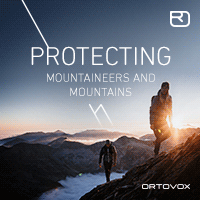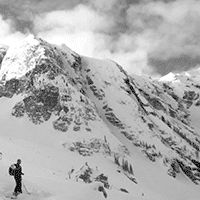Attack of the Godzilla El Niño?
Just wanted to weigh in here on the predictions of the coming season as I have been reading a lot of news about the forecasted El Nino and just how bad it's going to be. I recently read this article and thought it may be of value in the debate about what may be in store for skiers this winter:

The forthcoming El Niño may be among the strongest ever when it hits this winter, climatologists say, and may result in record storms. Some scientists say that “collectively, these atmospheric and oceanic features reflect a significant and strengthening El Niño.” “This definitely has the potential of being the Godzilla El Niño,” a NASA climatologist said, adding that the warming Pacific waters’ storm signals are currently stronger than in any of its most powerful previous incarnations.
This fall and winter’s predicted El Niño has the potential to become the most powerful ever recorded and could bring “extreme rainfall” to parched California, but it may not be enough to reverse four years of drought, federal forecasters said Thursday.
“Everything now is going to the right way for El Niño,” Patzert said. “If this lines up to its potential, this thing can bring a lot of floods, mudslides and mayhem.”
“Everything now is going to the right way for El Niño,” Patzert said. “If this lines up to its potential, this thing can bring a lot of floods, mudslides and mayhem.”
Data showing continued warm sea-surface temperatures in the Pacific Ocean were leading to the prediction of a strong El Niño to peak in late fall or early winter, according to a monthly report released Thursday by the National Weather Service’s Climate Prediction Center.
The August report shows a greater than 90 percent chance of El Niño continuing through the Northern Hemisphere in winter, and a roughly 85 percent chance of it lasting until early spring.
“We’re predicting that this El Niño could be among the strongest El Niños in the historical record dating back to 1950,” said Mike Halpert, deputy director of NOAA’s Climate Prediction Centre.
In a conference call with reporters, Halpert cautioned that there is no guarantee that we’ll see the typical impacts of an El Niño, which include increased precipitation across the southern portion of the U.S. from Central California to Florida.
“Just because something is favoured, it doesn’t guarantee it will happen. And more importantly for California … one season of above normal rain and snow is very unlikely to erase four years of drought,” Halpert said.
The August report stated that “forecaster consensus unanimously favours a strong El Niño,” with peak three-month-average sea surface temperatures that could exceed 3.6 degrees Fahrenheit above normal in the Niño 3.4 region.
If the forecast turns out to be accurate, “it will place the 2015 event among the strongest El Niños,” Emily Becker of the National Oceanic and Atmospheric and Administration wrote on NOAA’s website Climate.gov.
Becker dubbed the current El Niño “Bruce Lee” back in July because of its strength.
Bill Patzert, a climatologist for the NASA’s Jet Propulsion Laboratory in La Cañada Flintridge, told the Los Angeles Times that it had the potential to be the “Godzilla El Niño.”
He added El Niño’s signal in the ocean was “stronger” in August than it was in the summer of 1997, when the most powerful El Niño on record developed.
“Everything now is going to the right way for El Niño,” Patzert told the Times. “If this lines up to its potential, this thing can bring a lot of floods, mudslides and mayhem.”
Storms in early 1998 brought flooding and mudslides that left 17 people dead and caused more than half a billion dollars in damage to the state.
Though many in the state are anticipating the possible deluge this coming winter, an El Niño may not mean much for California’s water supply, state and federal officials cautioned.
El Niños have only a weak — or sometimes no — correlation with increased precipitation in Northern and Central California and in the upper Colorado River basin, areas where the Golden State gets most of its water.
In the central Sierra Nevada, where mountain snowpack flows into statewide drinking supply come spring, it would take 2 1/2 to three times the average annual precipitation to balance the snowpack deficit created by the drought, said Kevin Werner, NOAA’s director of western region climate services. The wettest year on record in that region, 1983, brought only 1.9 times the average annual precipitation, Werner said.
“So we would need something in excess of the wettest year on record to balance that four-year deficit,” Werner said.
The state Department of Water Resources reiterated the drought-related message in a news release.
“California cannot count on potential El Niño conditions to halt or reverse drought conditions,” state climatologist Michael Anderson said in the release. “Historical weather data shows us that at best, there is a 50/50 chance of having a wetter winter. Unfortunately, due to shifting climate patterns, we cannot even be that sure.”
El Niño occurs roughly every two to seven years, according to NOAA. It is a climate pattern in the tropical Pacific Ocean that results from the interaction between the ocean’s surface layers and overlying atmosphere.







